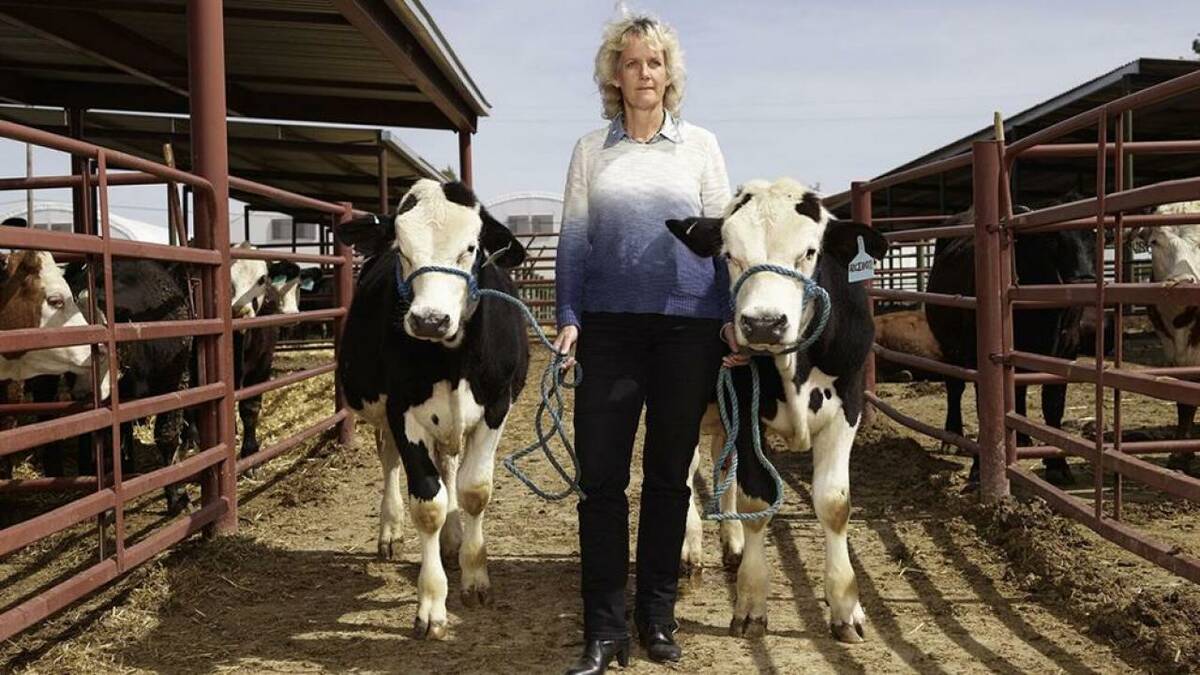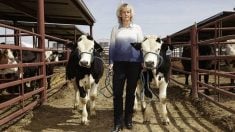Cereal breeder Aaron Beattie may not have grown up on a farm, but the new barley varieties he develops almost certainly will.
Beattie, who was born in Ontario and raised in Regina, recently took over as the top barley and oat breeder at the University of Saskatchewan’s Crop Development Centre.
He will oversee the development of new feed, food and malting barley lines and new feed and milling oat varieties.
Beattie will replace Brian Rossnagel, who is scheduled to retire next year.
Read Also

Stacking Canada up on gene editing livestock
Canada may want to gauge how Argentina and other countries have approached gene editing in livestock and what that has meant for local innovation.
Rossnagel will continue working at the centre for the next few months but will gradually reduce his workload as Beattie becomes more accustomed to his new position.
Rossnagel and Beattie have been working closely at the CDC for nearly a decade.
Rossnagel acted as Beattie’s adviser when Beattie was completing his PhD research on net blotch and barley pathology.
Later, when Beattie was hired as a researcher at the CDC, he conducted much of the work that supported Rossnagel’s breeding initiatives.
“It’s been a very good experience spending basically the last nine years working with him (Rossnagel) and working even more intensively with him over the last four or five years in the program,” Beattie said.
“He knows just an incredible number of people in the industry and he always seems to have some insight into how an organization works or what the upcoming areas of interest will be.
“Spending time with him has certainly allowed me to get a good sense of what’s important and what’s not to the oat and barley industries and who the key people are.”
Beattie said a good barley and oat breeder must keep his ear to the ground, maintain close contact with end users and ensure the program remains relevant and attuned to emerging trends in the food, feed and brewing industries.
“The job’s main function, of course, is to produce new varieties for Saskatchewan farmers,” he said.
“But another important part of the job is acting as an intermediary and basically working to ensure the program is relevant and capable of producing what people are needing out there.”
Under Rossnagel’s direction for the last 33 years, the centre’s barley and oat program has released 40 barley and 18 oat varieties, many of which are still grown widely in Western Canada.
Beattie has co-developed four oat varieties, two malting barley varieties and two feed barley varieties.
One of his main goals as CDC’s barley and oat breeder will be to maintain the centre’s momentum and ensure that it solidifies its position in barley and oat breeding.
Right now, only a handful of organizations are involved in barley and oat breeding in Western Canada, including the CDC, the Feed Crop Development Centre in Lacombe, Alta., and Agriculture Canada.
American cereal breeding company Westbred also develops varieties that are suited to Western Canada, but acreage is limited.
Beattie said barley breeders at the CDC have had trouble in the past obtaining industry support for projects that focus on developing new feed varieties. As a result, new feed barley lines will not be a top priority at the centre.
Instead, greater emphasis will be placed on new malting barley varieties that offer enhanced brewing characteristics.
“Even over the past few years, there’s been a little bit of a shift away from the feed side of things,” he said.
“In general, the feeding industry runs on a cheap feeding source and it’s been hard to acquire consistent funding based on the end needs of
that user group.… I also think that there’s been a little bit of a misunderstanding that there’s something special about a feed variety that’s not in a malting variety, and vice versa. But I think in most cases, a good malting barley will also make a perfectly suitable feed.
“Traditionally, there has been a little bit of a yield gap between the two but I think that gap is closing quite a bit.”
Beattie said the malting program will focus on low-protein and lowphytate lines. Low phytate barley improves fermentation and reduces the need for mineral supplementation during the brewing process.
The barley program will also continue its work on hulless barley lines that are high in beta glucan content and have market potential in the specialty food processing industry.
The centre has already registered hulless barley lines including CDC Rattan and CDC Fibar, although acreage is small. In oats, the centre will focus mainly on the development of new milling oat lines.
“We’re also doing work on the feed side as well as forage oats, and in each of those areas you’ve always got a few new traits that you’re trying to incorporate.”
Beattie said concern over the stability of private and public investment in Canadian cereal breeding programs has highlighted the importance of maintaining a strong barley and oat program at the CDC.
“Over the last 30 years or so, we’ve had a lot of success with the release of new varieties … so I think the most important thing is just to keep things rolling and maintain that momentum,” he said. “You can never be sure what’s happening with other organizations out there that work with these crops … but the CDC and the Saskatchewan government have been really good about maintaining support for this position and I’m expecting that (our role) might become even more important (in the future).”
BIOGRAPHY
Name:
Aaron Beattie
Position:
Barley and oat breeder at the Crop Development Centre in Saskatoon
Education:
•Beattie earned an undergraduate degree in biology at the University of Waterloo.
•He obtained a master’s degree in plant breeding and genetics at the University of Guelph
•He has a PhD in molecular plant pathology at the University of Saskatchewan.
•He has been working as a research officer at the CDC since 2006.















